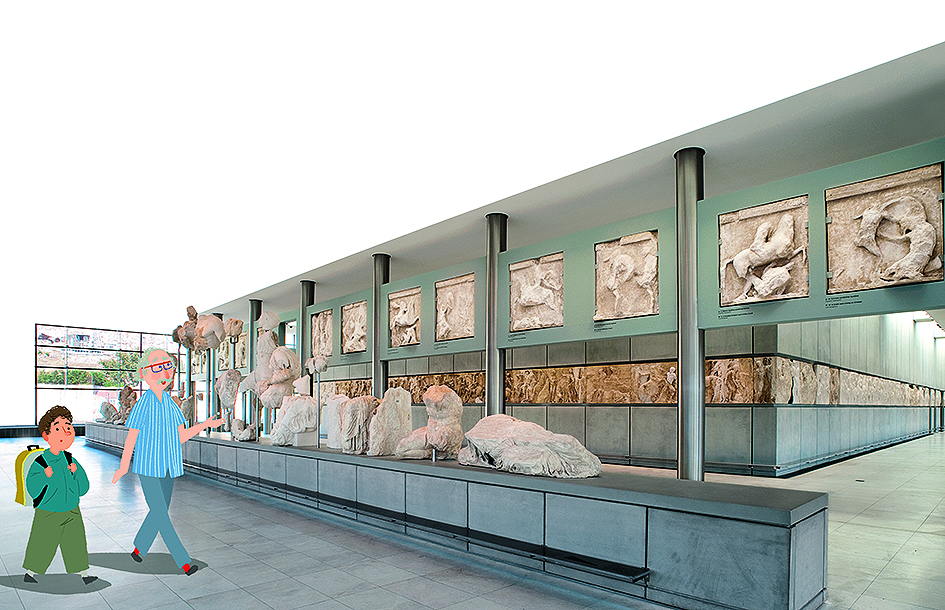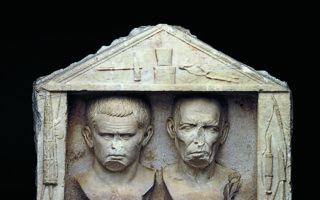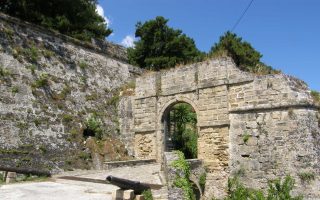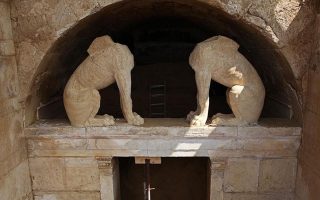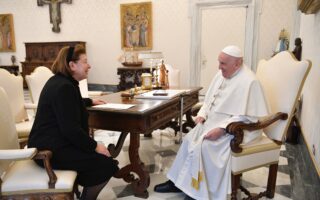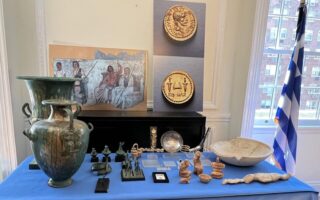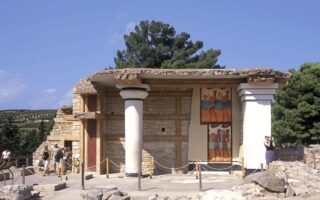An Acropolis guide for curious young minds
Archaeologist Panos Valavanis follows up on his successful 2013 publication with the history of the Sacred Rock in a bilingual, ‘lighter’ edition
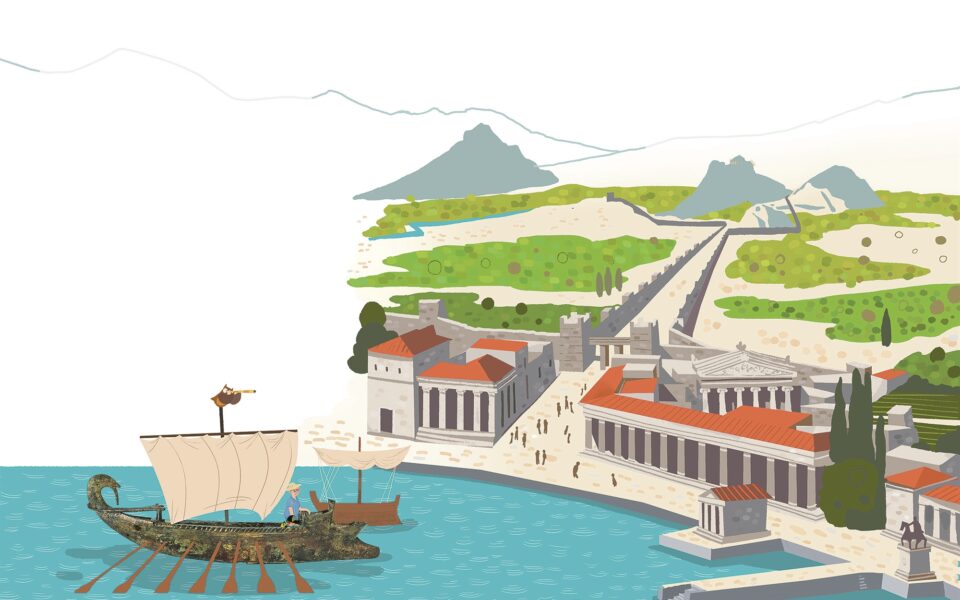
If Athens’ population is estimated at roughly 4 million today, back in ancient times, Attica as a whole was home to just 300,000 to 400,000 people, the majority of whom resided in the valley around the Acropolis and the Agora, the center of political, social and commercial activity. On the other side of the Acropolis, the Theater of Dionysos staged tragedies and comedies all day long to the edification of thousands of Athenians, while Pericles’ Odeon was used for concerts, music competitions and the Panathenaic Games. The Odeon of Pericles was a square structure with a triangular roof supported on wooden masts from the destroyed Persian fleet in the Battle of Salamis and accommodated some 5,000 people. It was eventually replaced by the Odeon of Herod Atticus, a much more advanced theater.
The Acropolis was a rock that became a fortress and then, when the city-state of Athens was created in the 8th century BC, a symbol of the city and a sanctuary dedicated to its patron, the goddess Athena. It was splendidly decorated with statues and sculptures that can still be admired today at the temple and at the Acropolis Museum. Among them, the statues of young women (kores) commissioned by their parents so as to secure the protection of the powerful goddess. The sculptor undertaking the commission would create a clay or plaster likeness of the girl and then render it in marble, adding color to the clothing, hair, lips and eyes.
This is just some of the fascinating information contained in “The Acropolis History: Where Man and the Gods Meet,” a guide to the ancient citadel by archaeologist Panos Valavanis, published by Kapon in Greek and English. It comes after the 2013 publication of “The Acropolis through its Museum,” which won over readers with the succinct manner in which it explained how and why the Acropolis monuments were created, as well as the politics involved behind the creation of the citadel.
The publication of that book got Moses and Rachel Kapon and Valavanis talking about the need for a similar book that would be addressed to children, though the “lighter version,” as the writer calls it, can be enjoyed by older readers too. With engaging illustrations by Costas Theoharis, “The Acropolis History: Where Man and the Gods Meet” takes readers on a tour of the citadel and its monuments, talks about the people who created them and the slaves who toiled on the project.
“We chose the conversational style and descriptive illustrations to help readers not just imagine the monuments, but the people too,” Valavanis tells Kathimerini of the book, which is centered on the conversations of a veteran archaeologist and his inquisitive 12-year-old nephew.
‘The monuments on the Acropolis were not built for one leader, but for an entire people, and that means something to this day’
“I have a lot of experience with children and students, with the tours I have conducted myself and also because we spend so much time in museums, we have a sense of the attitudes of school groups that take part in their educational programs. This is how the fictitious nephew came about, and the veteran archaeologist, who is based on me, now that I have retired,” explains the author.
The book is a joy of well- and lesser-known stories about the Acropolis, such as how Pericles “sold” the ambitious and extravagant project to the people of Athens, telling them that it would generate jobs during a serious slump in employment, it would edify their city and give them a sense of pride. His rhetorical prowess allowed him to realize his vision for the Parthenon, the Propylaia, the Erechtheion, the Temple of Athena Nike and the other splendid monuments that make up the Acropolis, even though the project cost more than a billion euros in today’s money, which came from the spoils of war against the Persians and from revenues from the sanctuary.
Valavanis is a gifted narrator who knows how to hold his readers’ attention.
“We tend to be stuck in the old way of doing things, when children now, with the help of the internet, approach matters in a much different way. There’s also the competition from video games, which compels us to find or invent new ways to approach them,” says the Athens University honorary professor of archaeology.
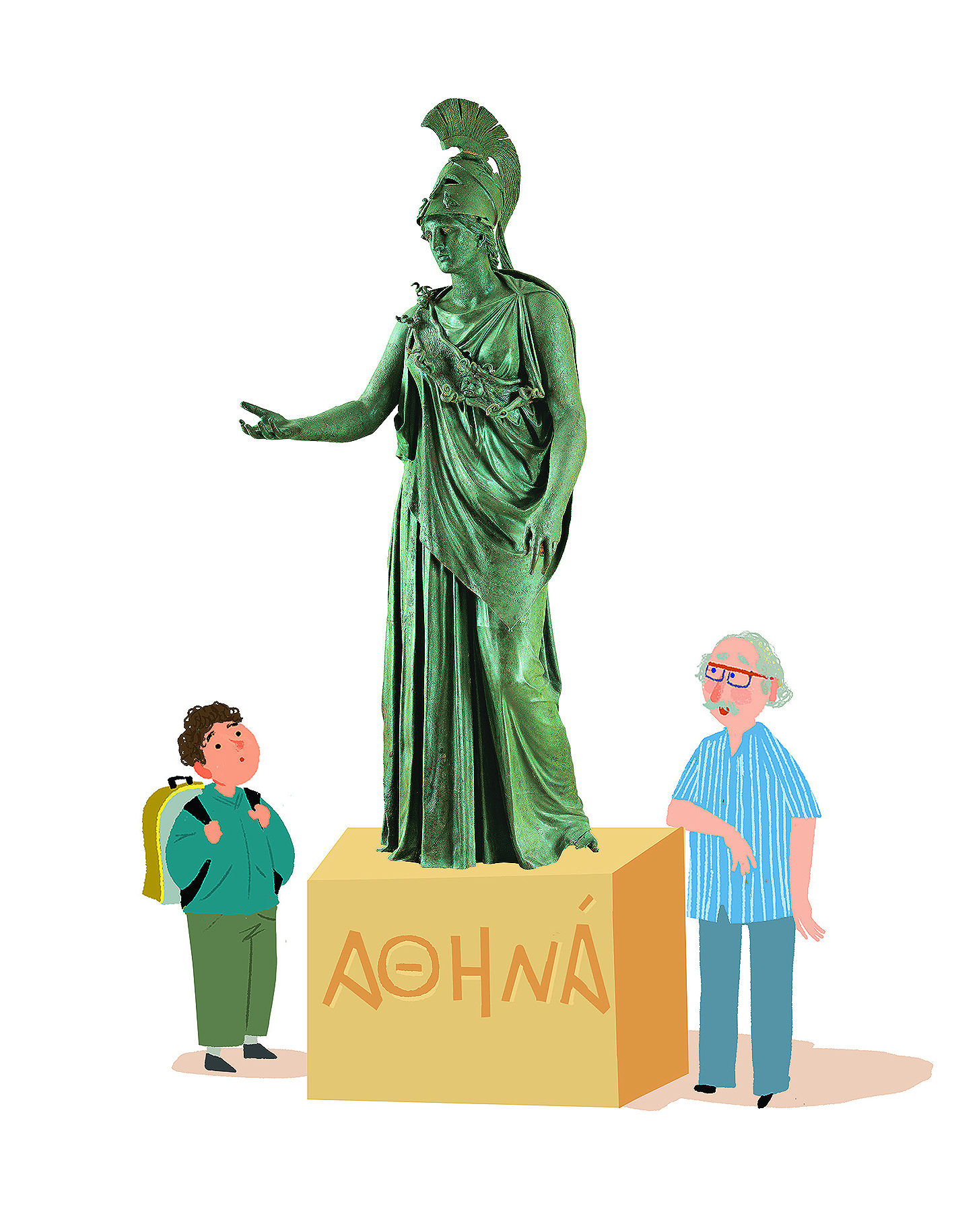 How hard was it to write a scientifically solid book about such a weighty subject that can appeal to children and older readers? “It’s not easy, especially for those of us who are not endowed with the gift of writing or are not professional children’s authors. The text for this book was rewritten three or four times from scratch, in the sense that I’d show it to my own children, to friends, teachers and relatives, and tried to make each new version more comprehensible than the previous one. We managed to keep the scientific tone, without making it off-putting,” says Valavanis, explaining that it took more than two years to write the book.
How hard was it to write a scientifically solid book about such a weighty subject that can appeal to children and older readers? “It’s not easy, especially for those of us who are not endowed with the gift of writing or are not professional children’s authors. The text for this book was rewritten three or four times from scratch, in the sense that I’d show it to my own children, to friends, teachers and relatives, and tried to make each new version more comprehensible than the previous one. We managed to keep the scientific tone, without making it off-putting,” says Valavanis, explaining that it took more than two years to write the book.
One of the things the archaeologist is eager to get across is how monuments reflect the values but also the challenges of their given time. Pericles’ vision was to cast Athens as the leader of the Greek world; what he accomplished was a universal landmark and historical milestone.
“The monuments on the Acropolis were not built for one leader, but for an entire people, and that means something to this day,” says Valavanis.
“The pleasure we get as viewers or as users, even indirectly, is one of the greatest accomplishments of architecture. After a time, great works of art belong to everyone and this is a great democratic conquest,” he adds.
Valavanis is already working on his next book, and it will be dedicated to dogs in antiquity. It was inspired by a dog that turned up on his doorstep two years ago. “She had eight puppies that we were able to give away, but there was also a ninth, which was half-dead, that we decided to keep. This is how I got the idea for the new book, which will have all sorts of lovely stories and will also fill a void in the Greek literature,” he says.
